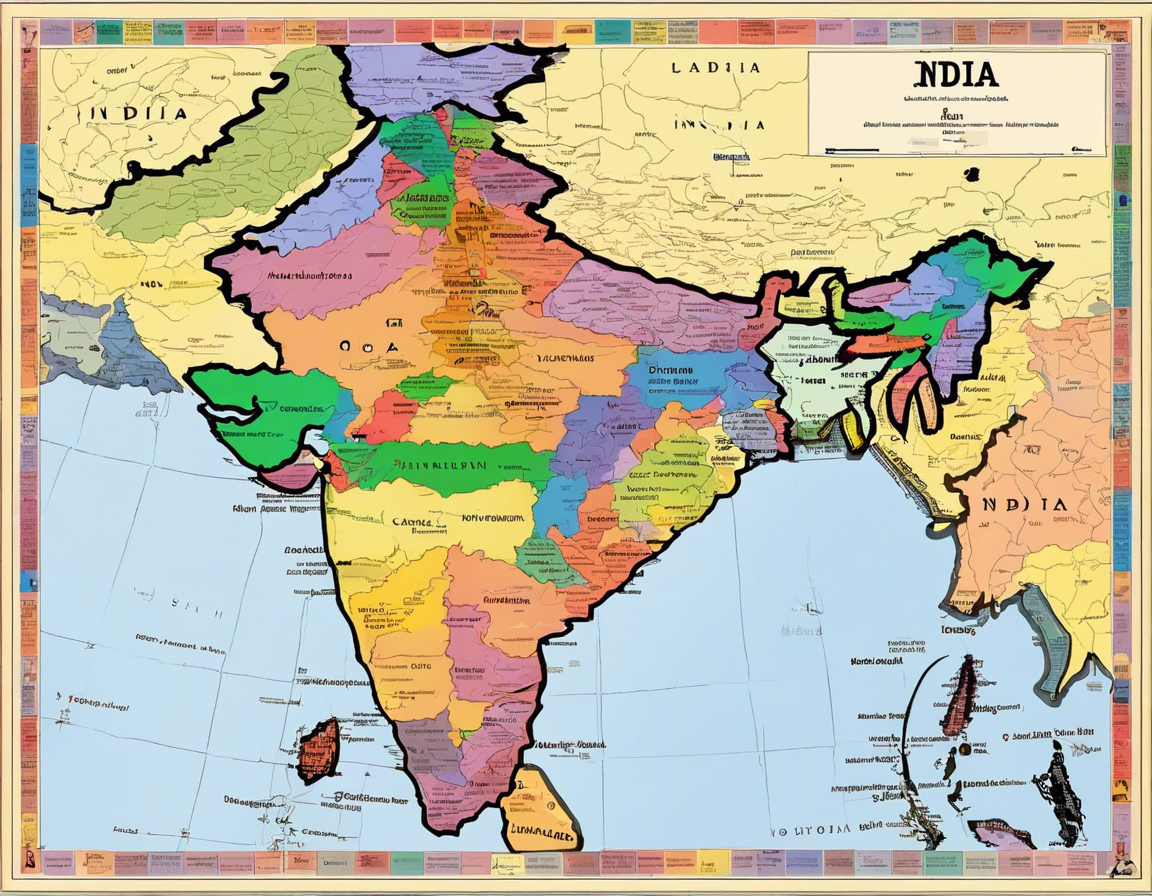Introduction
India, a land of diversity and rich cultural heritage, is the seventh-largest country in the world by land area. Located in South Asia, it has a complex political landscape that is crucial to understanding its governance and society. In this article, we will delve into a detailed political map overview of India, highlighting its states, union territories, and major cities.
States and Union Territories
India is divided into 28 states and 8 union territories. Each state has its own elected government, while union territories are governed directly by the central government. The states vary in size, population, and cultural identity, making India a mosaic of different languages, traditions, and lifestyles.
Northern India
Northern India is known for its historical significance and vibrant culture. States like Uttar Pradesh, Rajasthan, and Punjab are home to iconic landmarks such as the Taj Mahal, Jaipur’s palaces, and the Golden Temple. The capital city, New Delhi, is located in the National Capital Territory of Delhi, a union territory.
Southern India
Southern India is famous for its lush landscapes, temples, and rich cuisine. States like Karnataka, Tamil Nadu, and Kerala attract tourists with their beautiful beaches, backwaters, and hill stations. The city of Bengaluru (Bangalore), known as the Silicon Valley of India, is located in Karnataka.
Western India
Western India is a blend of modernity and tradition. Maharashtra, Gujarat, and Goa are popular states in this region. Mumbai, the financial capital of India, is located in Maharashtra, while Goa is known for its picturesque beaches and vibrant nightlife.
Eastern India
Eastern India is characterized by its cultural heritage and natural beauty. States like West Bengal, Odisha, and Bihar are known for their festivals, temples, and historical sites. Kolkata, the cultural capital of India, is located in West Bengal.
Central India
Central India is a land of tribal communities, national parks, and ancient caves. States like Madhya Pradesh and Chhattisgarh offer a glimpse into India’s wildlife and history. Bhopal, the capital of Madhya Pradesh, is known for its lakes and palaces.
Union Territories
India’s union territories include Delhi, Puducherry, Chandigarh, and others. These regions are directly administered by the central government and have their own unique governance structure.
Major Cities
India is home to several major cities that serve as hubs of commerce, culture, and education. From the bustling streets of Mumbai to the tranquil lakes of Udaipur, each city has its own charm and significance.
Challenges and Opportunities
India’s political map is not without its challenges. Issues such as regional disparities, ethnic conflicts, and economic inequality continue to shape the country’s governance. However, India also presents immense opportunities for growth and development, with a young population and a growing economy.
Conclusion
In conclusion, exploring India’s political map offers a glimpse into the country’s diverse landscape and rich heritage. From the snow-capped peaks of the Himalayas to the sandy beaches of the Andaman Islands, India’s states and union territories embody a tapestry of cultures and traditions. Understanding India’s political map is essential for grasping the complexities of its governance structure and societal dynamics.
FAQs
1. How many states are there in India?
India is divided into 28 states.
2. What is the difference between a state and a union territory in India?
States have their own elected governments, while union territories are governed directly by the central government.
3. Which is the largest state in India by area?
Rajasthan is the largest state in India by area.
4. Where is the capital city of India located?
The capital city of India, New Delhi, is located in the National Capital Territory of Delhi.
5. What is the significance of Bengaluru in India?
Bengaluru, also known as Bangalore, is considered the Silicon Valley of India due to its thriving IT industry.
6. How many union territories are there in India?
India has 8 union territories.
7. Which city is the cultural capital of India?
Kolkata, located in West Bengal, is often referred to as the cultural capital of India.
8. What is the financial capital of India?
Mumbai, located in Maharashtra, is known as the financial capital of India.
9. Which state in India is known for its tribal communities and wildlife?
Madhya Pradesh, located in central India, is known for its tribal communities and national parks.
10. What are some of the popular union territories in India?
Popular union territories in India include Delhi, Puducherry, and Chandigarh.
